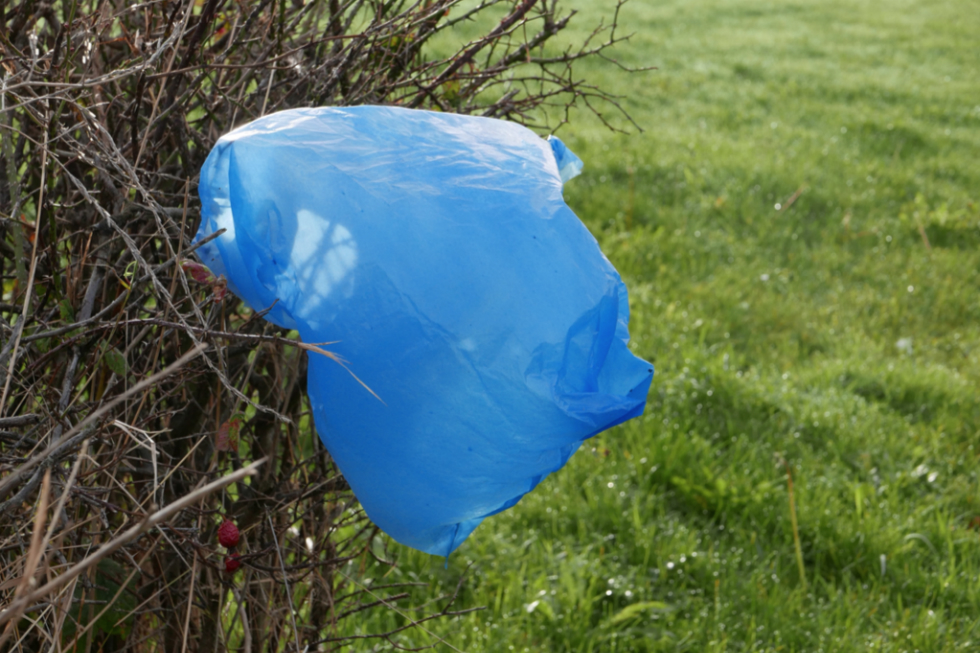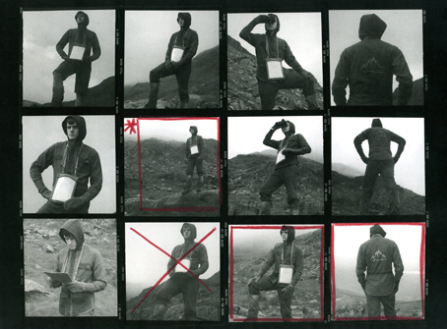A Green And Pleasant Land? Rural Reality Questioned At The Harris

How do we understand our relationship with our rural peripheries? Sue Flowers considers a mix of creative responses to the British countryside at the Harris Museum and Art Gallery, and finds stereotype and complexity hung side-by-side…
On a recent walk, I was suddenly greeted face-on by a rural reality: a plastic bag billowing in the wind. Dodging it, I thought: ‘Oops, there goes a pair of witches knickers!’ — an unlikely Irish term I learned from Joanne Lee’s artwork in A Green and Pleasant Land? Rural Life in Art, currently on display at the Harris Museum and Art Gallery in Preston.
Lee’s series of digital photographs Witches Knickers (2015) — the term meaning carelessly disregarded plastic bags caught on trees and fences — depict collected but discarded dog waste found adorning countryside lanes, and are just one of the more unusual and contemporary responses to the idea of ‘rural’. And there are a lot. Upon entering the show, visitors are confronted with a confusion of Victorian canvases, digital imagery and an interactive drawing space: a visually awkward beginning resulting from the inclusion of too many artworks. Nonetheless, there are some really great works to uncover here that explore the rural context.
Specifically, Georgina Barney’s GB Farming (2007); a series of photographs set in glowing light boxes and depicting farms from around the UK. The light passing through Barney’s images, as it does so freely in the natural landscape, enables the viewer to really read into the soul of the land. The photographs, taken over a period of eight months when the artist visited 14 farms, are honest, earthy and beautifully perceived; from the multicoloured repetitive squares of Lambing Shed at Langshaw Farm on the Scottish Borders, to the homogenised industry of Seedlings at G Marketing East Anglia, where it seems the manmade seed crates have even influenced the linear cloud formations above them to create a new industrial countryside.

Just around the corner is a delicate painted drawing by David Jones entitled Hill Stooks, Matterdale (1946): in contrast to Barney’s works, Jones utilises sensitive and poetic wind-like movements in watercolour and pencil to make the landscape come alive. Here, a writhing mass of haystacks, dry-stone walls and mountainsides rise up out of the paper, literally drawn from his sensitivity to place.
Each gallery, unfortunately, has a predictable large green wall — it’s rural so it, preseumably, must be green — accompanied by exhibition text that irritatingly seems to skip across imaginary hillsides. The challenge of this exhibition becomes a question of how we ascertain rural reality, when it is not one simple truth.
Artist Rebecca Chesney addresses some of these issues in her installation Death by Denim (2015); she showcases purportedly archival material from the Scoglio family archives, an outdoor clothing manufacturers from Bolton. Chesney meticulously presents, with museum-style accuracy, advertising, photographs, news reports and clothing samples demonstrating the use of denim for mountaineering. Ultimately, this presents a tragic slice of history: the death of the factory owner’s son Dino, found dead on Lakeland Fells due to the unsuitability of the ‘Summat’ denim designs he was wearing.
Through lovingly creating each piece of denim memorabilia herself, Chesney deliberately confronts the viewer with their own understanding of myth and reality head-on. Her installation cleverly blurs the boundaries between perception and a lived reality, and so creates a very pertinent response to our understanding of the rural context.
Our relationships to places and their cultural heritage are evolutionary and complex. This exhibition goes a long way in beginning to understand Preston’s relationship with its rural peripheries, but there is need for a longer and much harder look into rural issues to even begin to uncover such a wide range of lived realities.
Sue Flowers
The exhibition A Green and Pleasant Land? Rural Life in Art is on display at the Harris Museum and Art Gallery, Preston, until 26 September 2015
Read more about Preston-based In Certain Places new commission for the exhibition here
Images: top: Joanne Lee, Witches Knickers (2015), detail. Centre: Rebecca Chesney, Death by Denim (2015)
This article has been commissioned by the Contemporary Visual Arts Network North West (CVAN NW), as part of a regional critical writing development programme, supported by the National Lottery through Arts Council England — see more here #writecritical





